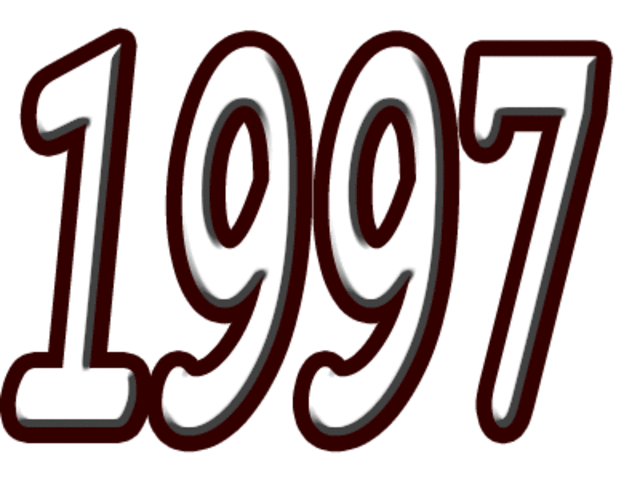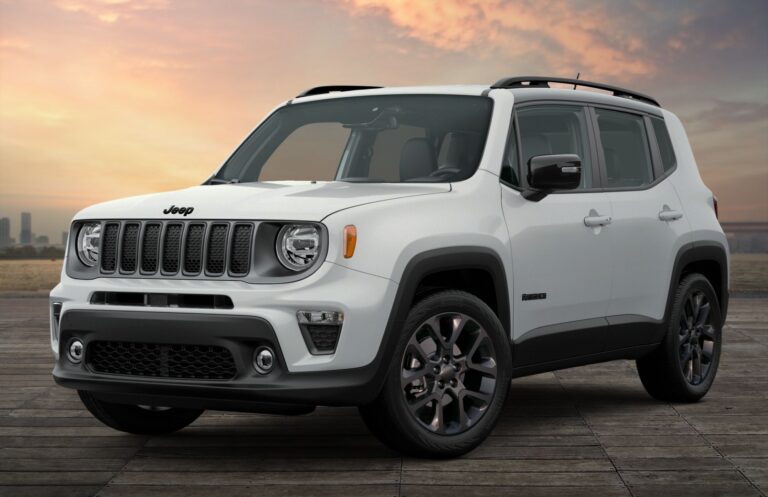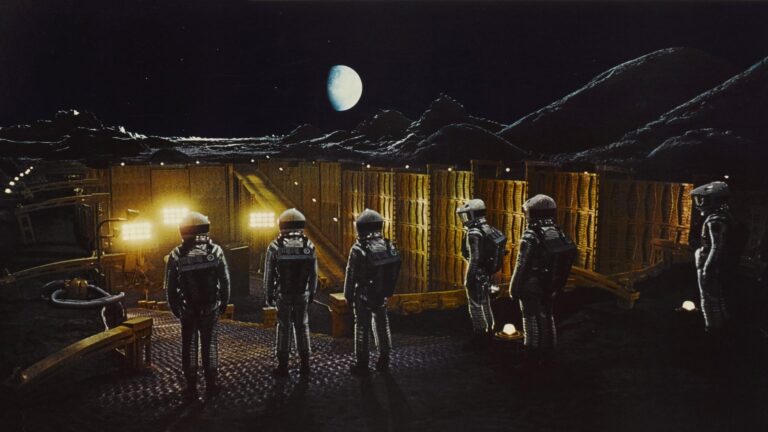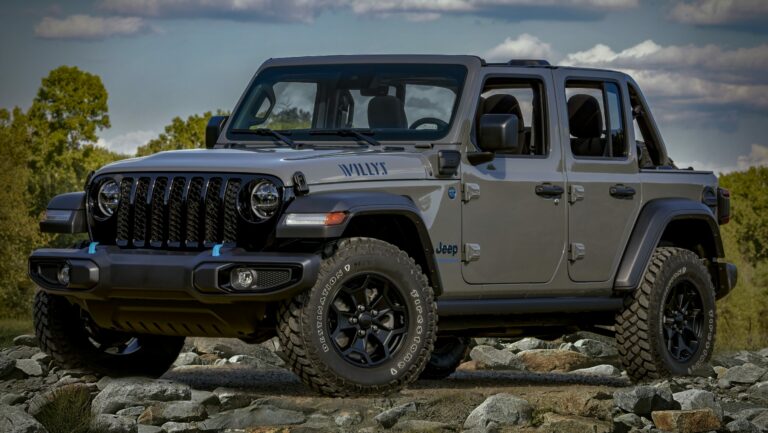Jeep JK Wrangler For Sale: Your Ultimate Guide to Finding the Perfect Off-Road Icon
Jeep JK Wrangler For Sale: Your Ultimate Guide to Finding the Perfect Off-Road Icon /jeeps.truckstrend.com
The Jeep JK Wrangler, produced from 2007 to 2018, stands as a pivotal chapter in the storied history of the iconic off-road vehicle. It ushered in an era of unprecedented popularity for the Wrangler, introducing the first-ever factory five-passenger, four-door model (the JK Unlimited or JKU) alongside the classic two-door. For sale across countless platforms, the JK Wrangler represents more than just a used car; it’s an entry point into a vibrant lifestyle, a community of enthusiasts, and a world of unparalleled adventure. Whether you’re a seasoned off-roader or a newcomer dreaming of open-air freedom and trail exploration, navigating the market for a used JK Wrangler requires careful consideration. This comprehensive guide will equip you with the knowledge to find, evaluate, and ultimately purchase your ideal Jeep JK Wrangler.
The Enduring Legacy of the JK Wrangler
Jeep JK Wrangler For Sale: Your Ultimate Guide to Finding the Perfect Off-Road Icon
The Jeep JK Wrangler succeeded the TJ generation, bringing significant updates while retaining the core tenets that define a Wrangler: solid axles, body-on-frame construction, removable doors, and a fold-down windshield. Its decade-long production run saw continuous refinements, most notably the introduction of the more powerful and fuel-efficient 3.6-liter Pentastar V6 engine in 2012, replacing the earlier 3.8-liter V6. The JK’s blend of modern amenities, improved on-road manners, and legendary off-road prowess made it a runaway success, selling over 2 million units worldwide. This popularity means a robust used market, offering a wide array of options for prospective buyers.
Why Choose a JK Wrangler? Unpacking Its Unique Appeal
The decision to buy a JK Wrangler often stems from a desire for a vehicle that transcends mere transportation. Here’s why the JK remains a compelling choice:
- Unrivaled Off-Road Capability: At its heart, the JK is an off-road beast. With high ground clearance, short overhangs, and available features like Dana 44 axles, electronic locking differentials, and an electronically disconnecting sway bar (Rubicon trim), it can tackle terrain that would leave most other vehicles stranded.
- Limitless Customization (Aftermarket Support): The JK boasts arguably the largest aftermarket support of any vehicle. From lift kits, tires, and bumpers to lighting, interior upgrades, and engine modifications, you can truly build a JK to suit your specific needs and personal style. This adaptability ensures your Jeep can evolve with your adventures.
- The Open-Air Experience: The removable doors, hardtop or soft top, and fold-down windshield offer an immersive connection with the environment unlike any other vehicle. This iconic feature is a major draw for those seeking freedom and adventure.
- Strong Resale Value: Jeeps, particularly Wranglers, hold their value exceptionally well. This means your investment is relatively safe, and should you decide to upgrade in the future, you’ll likely recoup a significant portion of your purchase price.
- Vibrant Community: Owning a Jeep is an instant invitation into a passionate and supportive community. "Jeep Wave" culture, local clubs, and online forums provide a wealth of knowledge, camaraderie, and opportunities for group adventures.
- Practicality with Fun (JKU): The four-door JK Unlimited (JKU) opened the Wrangler to a wider audience, offering more passenger and cargo space, making it a viable daily driver for families or those needing extra room without sacrificing the iconic Wrangler experience.

Key Considerations When Buying a JK Wrangler
Purchasing a used JK requires a discerning eye. Here’s what to prioritize during your search:
1. Condition is King: Rust, Mechanics, and Electrics
- Rust: This is often the biggest enemy of older Jeeps. Inspect the frame thoroughly, especially around welds, suspension mounting points, and behind the bumpers. Also check body panels, rocker panels, and floorboards. If you live in an area that uses road salt, rust is a higher concern.
- Mechanical Health: Listen for strange noises from the engine (ticking, knocking), transmission (slipping, hard shifts), and axles (whining). Check for fluid leaks. Test the 4×4 system engagement (both 4-High and 4-Low).
- Electrical System: Ensure all lights, gauges, windows, and infotainment systems work correctly. Check for any persistent "check engine" or warning lights.

2. Mileage and Maintenance History
Lower mileage is generally better, but a higher-mileage JK with meticulous maintenance records can be a better buy than a low-mileage one that’s been neglected. Ask for service records, receipts for parts, and any documentation of work performed.
3. Modifications: Friend or Foe?
Many JKs are modified. While some modifications enhance capability (quality lift kits, upgraded bumpers), others can indicate hard use or poor installation.
- Good Mods: Professionally installed lift kits, quality tires, protective armor, winch, upgraded lighting.
- Bad Mods: "Chop shop" modifications, poorly installed electrical, cheap suspension components, signs of extreme abuse.
- Ask Questions: Inquire about who installed the mods, when, and why. Be wary of heavily modified Jeeps without corresponding receipts or knowledge from the seller.
4. Recalls and Usage History
Check the vehicle’s VIN on the NHTSA website for any outstanding recalls. Ask the seller about the Jeep’s primary use: Was it a daily commuter, a weekend warrior, or a dedicated rock crawler? Signs of heavy off-road use (underbody scrapes, dents, bent components) might suggest a need for more thorough inspection.
5. Trim Levels and Their Impact
JK Wranglers came in various trim levels, each offering different features and affecting the price:
- Sport: The base model, offering essential Wrangler features. Most affordable, often the platform for extensive customization.
- Sahara: More comfort and aesthetic upgrades like body-colored fender flares, power windows, improved interiors, and infotainment. Better for daily driving.
- Rubicon: The ultimate factory off-roader. Comes with Dana 44 heavy-duty axles, electronic locking differentials (front and rear), an electronic sway bar disconnect, and a lower transfer case gear ratio (4:1 Rock-Trac). Commands the highest price due to its superior capability.
6. Engine and Transmission Choices
- 3.8L V6 (2007-2011): The earlier engine. Known for being robust but can be underpowered and prone to oil consumption in some instances.
- 3.6L Pentastar V6 (2012-2018): A significant upgrade. More powerful, smoother, and generally more fuel-efficient. Highly recommended if your budget allows.
- Manual vs. Automatic: Both transmissions are durable. Manual offers more control off-road and a classic driving experience. Automatic is convenient for daily driving and traffic. Test both if possible to see your preference.
Where to Find Your JK Wrangler For Sale
The market for used JK Wranglers is vast. Here are the best places to look:
- Online Marketplaces:
- Craigslist/Facebook Marketplace: Often the best for private party sales. Be cautious, but you can find good deals. Always meet in a safe, public place.
- AutoTrader, Cars.com, CarGurus: Reputable sites listing both dealer and private party sales.
- Dealerships:
- New Car Dealerships (Used Inventory): May offer certified pre-owned options or general used inventory. Higher prices, but often better reconditioning and warranties.
- Used Car Lots: Wide variety, but inspect carefully.
- Specialty Off-Road Shops: Some shops sell used Jeeps that they’ve worked on or customized. These can be reliable sources but might be priced higher.
- Enthusiast Forums and Social Media Groups: Online Jeep communities often have "for sale" sections. You might find a well-maintained Jeep from an enthusiast who knows its history.
- Word of Mouth: Let friends and family know you’re looking.
Tips for Inspecting a JK Wrangler
Once you find a potential candidate, follow these steps for a thorough inspection:
- Visual Inspection (Exterior & Interior): Look for consistent panel gaps, signs of accident repair, rust, tire wear patterns (uneven wear can indicate alignment or suspension issues). Check the condition of the soft top/hardtop seals. Inside, check for water damage, mildew, and functionality of all electronics.
- Underbody Inspection: Get under the Jeep if possible. Look for bent or dented frame rails, suspension components, fluid leaks, and heavy rust. Check axle seals and differential covers for leaks.
- Engine Bay: Look for leaks, frayed wires, signs of amateur repairs, and general cleanliness. Check fluid levels (oil, coolant, brake fluid).
- Test Drive:
- Start the engine cold: Listen for unusual noises.
- Drive at various speeds: Check for "Death Wobble" (violent steering wheel shimmy), abnormal vibrations, and steering looseness.
- Test brakes: Smooth, no pulling.
- Engage 4WD: Drive slowly in a safe area to ensure it engages and disengages properly.
- Listen to the exhaust: No excessive smoke or strange smells.
- Pre-Purchase Inspection (PPI): If you’re serious about a vehicle, spend the money ($100-$200) to have an independent mechanic (preferably one familiar with Jeeps) perform a PPI. They can spot issues you might miss.
Common Challenges and Solutions
While robust, JKs can have specific quirks:
- Rust: Especially on frames and hinges.
- Solution: Thorough pre-purchase inspection. For minor surface rust, address it promptly with rust converter and paint. For severe frame rust, walk away or factor in significant repair costs.
- Death Wobble: A terrifying, violent shaking of the front end, usually at highway speeds after hitting a bump.
- Solution: Often caused by worn steering or suspension components (track bar, ball joints, tie rod ends, control arm bushings). Diagnosis by a qualified mechanic is crucial.
- Oil Consumption (3.8L engine): Some earlier 3.8L engines may consume oil.
- Solution: Monitor oil levels regularly and top off as needed. It’s often not a catastrophic issue but requires attention.
- Water Leaks: From doors, freedom panels, or soft tops.
- Solution: Inspect door seals, freedom panel seals, and soft top condition. Many leaks can be resolved by cleaning or replacing seals, adjusting latches, or using dielectric grease.
- Finding an "Unmolested" Example: Many JKs are modified.
- Solution: Be patient in your search. If a modified Jeep appeals to you, ensure the modifications are high quality and professionally installed.
Price Guide: Estimated Jeep JK Wrangler For Sale Values
Please note: Prices are highly variable based on location, exact condition, mileage, specific modifications, and market demand. This table provides general estimated ranges in USD as of late 2023/early 2024 for a privately sold vehicle in good to excellent condition. Dealer prices may be higher.
| Year Range | Trim Level | Body Style | Typical Mileage | Condition | Estimated Price Range (USD) | Key Features/Notes |
|---|---|---|---|---|---|---|
| 2012-2018 | Rubicon | 4-Door (JKU) | 30,000 – 90,000 | Excellent | $28,000 – $40,000+ | Most sought-after, holds value well. Prices higher for factory options (leather, premium audio). Modified Rubicons can exceed $40k. |
Note: These are estimates. Condition, specific options, aftermarket modifications, geographical location, and current market demand will significantly influence the actual sale price.
Frequently Asked Questions (FAQ) About Buying a JK Wrangler
Q1: What’s the best year to buy a JK Wrangler?
A1: The 2012-2018 model years are generally preferred due to the more powerful and refined 3.6-liter Pentastar V6 engine and improved interior features. If your budget allows, aim for a 2012 or newer.
Q2: Should I buy a 2-door JK or a 4-door JKU?
A2: It depends on your needs. The 2-door JK is more nimble off-road and has a classic look. The 4-door JKU offers significantly more passenger and cargo space, making it much more practical for families, longer trips, or carrying more gear. The JKU is also generally more popular and holds its value slightly better.
Q3: How much does insurance cost for a JK Wrangler?
A3: Insurance costs vary widely based on your location, driving record, age, chosen coverage, and the specific model year/trim. Generally, Wranglers are not excessively expensive to insure, but it’s always wise to get a quote before purchasing.
Q4: What is "Death Wobble" and how do I fix it?
A4: Death Wobble is a violent, uncontrollable shaking of the front end, usually triggered by hitting a bump at highway speeds. It’s primarily caused by worn or loose components in the front suspension and steering system, such as the track bar, ball joints, tie rod ends, or control arm bushings. It’s fixable, but requires proper diagnosis and replacement of the faulty parts, often by a specialist.
Q5: Are modified Jeeps bad to buy?
A5: Not necessarily. Many modifications enhance the Jeep’s capability or appearance. However, poorly installed or cheap modifications can cause issues. Look for evidence of professional installation, reputable brands for parts, and ask the seller detailed questions about the mods. Be wary of heavily modified Jeeps without a clear history or if the seller doesn’t seem knowledgeable about the changes.
Q6: What’s the real difference between Sport, Sahara, and Rubicon trims?
A6:
- Sport: The base model, most affordable, ideal for those who want to build their Jeep from the ground up.
- Sahara: More focused on comfort and aesthetics, with body-colored fenders, upgraded interior materials, and more convenience features. Good for daily driving and light trails.
- Rubicon: The dedicated off-road trim, featuring stronger Dana 44 axles, front and rear electronic locking differentials, an electronically disconnecting front sway bar for increased articulation, and a lower gearing transfer case. Best for serious off-roaders.
Q7: What kind of fuel economy can I expect?
A7: Wranglers are not known for their fuel efficiency. The 3.8L typically gets 15-18 MPG combined, while the 3.6L Pentastar might get 17-21 MPG combined, depending on the transmission, tire size, and modifications. Larger tires and lift kits will significantly reduce fuel economy.
Q8: Is the JK Wrangler reliable?
A8: Generally, yes, with proper maintenance. Like any vehicle, specific issues can arise (e.g., oil consumption on some 3.8L, minor leaks). However, the JK is known for its robust construction and many components are designed to be serviceable. The strong aftermarket support also means parts are readily available.
Conclusion: Your Adventure Awaits
The Jeep JK Wrangler, whether in its classic two-door form or the versatile four-door Unlimited, remains a highly desirable vehicle in the used market. Its iconic design, unparalleled off-road capability, and the vibrant community it fosters make it much more than just a means of transport—it’s a lifestyle choice. By understanding its history, knowing what to look for during inspection, and being prepared for the unique aspects of Wrangler ownership, you can confidently navigate the "Jeep JK Wrangler For Sale" landscape. Take your time, do your research, and once you find that perfect JK, prepare for a world of open-air freedom and unforgettable adventures. The trail is calling!
![]()





